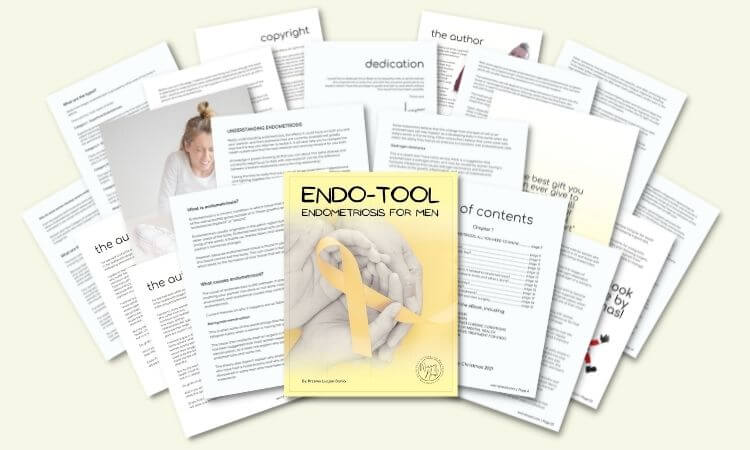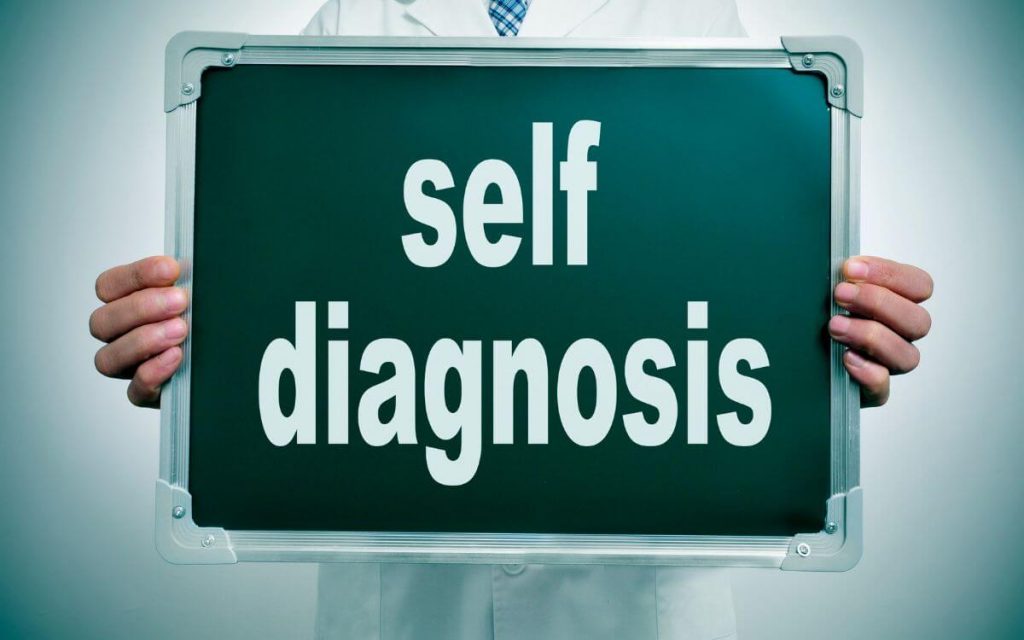What is stage 4 endometriosis?
When my wife was diagnosed with endometriosis, I could barely spell the word, let alone understand it. I had no idea about this chronic condition, its staging system, and what stage 4 endometriosis meant.
Here’s, in a nutshell, what you need to know about stage IV endo…
Stage 4 endometriosis, also known as severe endometriosis, is the most advanced stage of the condition. It is characterized by deep infiltrating endometrial tissue beyond the pelvic area and into other parts of the body including such organs as the bowels and bladder.
This stage can cause serious complications and a great deal of pain for those affected. The exact cause or causes of stage 4 endometriosis are unknown, but research has suggested that genetics, hormones, and environmental factors may all play a role in its development.
Treatment for stage 4 endometriosis can include medical, hormonal, and surgical options, but also a holistic approach, depending on the severity and desired outcome.
- What is endometriosis?
- Endometriosis stages and types.
- Endometriosis symptoms.
- Diagnosis of endometriosis.
- Treatment of endometriosis.
- Important questions to ask…
- Is it life-threatening to have endometriosis?
- What happens if you don't treat endometriosis?
- What is the most severe endometriosis?
- How serious is stage 4?
- Can you live with the stage 4 endo?
- Does stage 4 endometriosis mean infertility?
- Do you need surgery for stage 4?
- Is stage 4 curable?
- Is there stage 5 endometriosis?
- How serious is deeply infiltrating endometriosis?
- What is the most common site of deep endometriosis?
- Quick recap…
What is endometriosis?
Endometriosis occurs when the endometrial-like tissue (endometrial implants), similar to the one that makes up the lining of the uterus, grows outside of its normal location.
This displaced endometrial tissue can continue to act as it normally would, building scar tissue, and leading to inflammation, pain, and possible scar tissue. Endometriosis growth occurs during or outside of the menstrual cycle, resulting in a disruption of the normal tissue, and forming scar tissue.
Generally, the locations of these are the pelvic cavity, the fallopian tubes, and the ovaries, however, endo is a full-bodied disease and stage 4 is the most advanced endometriosis that can extend to organs outside of the reproductive system.
If you want to learn more about endometriosis, I wrote an “Endo-Tool, Endometriosis for Men” e-Book.
You can get the 1st Chapter of the e-Book for FREE, and if you like it, you’ll get a Whopping 33% Discount on the Whole Book, plus discounts on other helpful tools. You have nothing to lose but a lot to gain!
The first chapter alone contains all the comprehensive medical knowledge about endometriosis, including:
- What is endometriosis?
- What are the symptoms?
- What causes endometriosis?
- What does endometriosis look like?
- What are the stages?
- What are the types?
- What is adenomyosis and how is it related to endometriosis?
- Why do some women develop severe endo and others don’t?
- Does endometriosis cause infertility?
- How is endometriosis diagnosed?
- Do types and stages affect the treatment?
- Recurrence of endometriosis after excision surgery.
FREE Chapter of “Endo-Tool”
Endometriosis e-Book for Men

Endometriosis stages and types.
When it comes to endometriosis has four stages from mild disease to severe disease. It’s important to be aware of the four stages and recognize that stage 4 endometriosis is the most severe stage.
The other endometriosis stages are stage 1, stage 2, and stage 3.
- Stage 1 is considered minimal endometriosis.
- Stage 2 is mild endometriosis.
- Stage 3 is moderate endometriosis.
- Stage 4 is severe endometriosis.
There are also types of endometriosis that I’d like to briefly discuss. Apart from the staging system, endometriosis can be classified according to the type of endometriosis tissue, such as ovarian endometriomas, deeply infiltrating endometriosis, and peritoneal ones.
- Ovarian cysts (endometriomas or chocolate cysts) on the ovaries are often filled with thick, dark red, or chocolate-like fluid.
- Deeply infiltrating endometriosis is stage 4 endometriosis where the lesions have infiltrated deep into other tissues or beyond pelvic organs.
- Peritoneal endometriosis is when there are many small spots of endometrial tissue on the peritoneum, which is a thin layer of tissue that lines your abdominal area.
Endometriosis symptoms.
Every person’s symptoms will always vary from one to another, so it’s important that doctors treat every woman as an individual instead of a number in a medical system.
In order to recognize endometriosis, you need to learn about the symptoms. They include:
- Pain or cramping during or before your period
- Chronic pelvic pain
- Lower back and abdominal pain
- Painful urination and/or bowel movements
- Pain during or after sex
- Heavy periods that last more than seven days
- Fatigue
- Infertility
If you’re experiencing any of these symptoms, it is important to speak to your doctor and make sure that you get on the path of being diagnosed. Remember though, that not every person will experience all of the above. Some will have other symptoms. Some women will have mild and others will have severe symptoms.
Diagnosis of endometriosis.
In order to diagnose endometriosis it can take an average of 7-8 years, endometriosis tissues can only be confirmed with a laparoscopy. It’s important to note that stage 4 endometriosis is the most difficult stage to diagnose as it can affect organs outside of the pelvis.
The doctors should offer a diagnostic laparoscopy, but in some cases (like my wife’s), an endometriosis specialist will remove all the visible endometrial tissue during this diagnostic procedure.
Before the endometriosis implants (superficial implants or deep implants of endometriosis) are removed, doctors will do a physical exam, pelvic exam, and try and put women on birth control pills, and hormonal contraceptives, use magnetic resonance imaging (MRI), even check for cancer cells.
Now, I’ve spoken to many women alongside my wife, and what they experienced was pretty upsetting. Many general healthcare providers gaslighted them and blamed all of their symptoms on anxiety and depression. I strongly advise you to do what I did…
Only when I began to accompany my wife to her doctor’s appointments, only then she began to be taken seriously. If you are a woman who suffers from terrible symptoms and suspects endometriosis, have a man by your side, if you are the man, attend her appointments.

Treatment of endometriosis.
After confirming an endometriosis diagnosis, medical treatments generally include medications used to control pain during each menstrual period and reduce inflammation and endometrial growths.
Hormonal treatments aim to reduce the activity of endometrial tissue, such as progestins, danazol, and gonadotropin-releasing hormone agonists (GnRHa).
A surgical procedure is usually necessary for stage 4 endometriosis and can involve the removal of endometrial lesions or cysts with laparoscopic techniques or a more invasive procedure known as laparotomy.
In addition to medical and surgical treatment, lifestyle changes including diet modifications, exercise, meditation, and stress management can also play an important role in managing stage 4 endometriosis.
It is important for those affected by stage 4 endometriosis to work closely with their healthcare team to determine the best course of treatment and management for their individual needs.
In order to receive the best possible treatment for endometriosis patients, I would strongly advise you to find BSGE-accredited endometriosis specialists that specialize in endometriosis surgery.
With the right combination of medical, surgical, lifestyle, and holistic interventions, stage 4 endometriosis can be effectively managed and treated.
Important questions to ask…
Whether you have stage I or stage IV, you must learn the basics of endometriosis. Here are some questions to ask your healthcare provider:
- Is it life-threatening to have endometriosis?
- What happens if you don’t treat endometriosis?
- What is the most severe endometriosis?
- How serious is stage 4?
- Can you live with the stage 4 endo?
- Does stage 4 endometriosis mean infertility?
- Do you need surgery for stage 4?
- Is stage 4 curable?
- Is there stage 5 endometriosis?
- How serious is deeply infiltrating endometriosis?
- What is the most common site of deep endometriosis?
Luckily for you, I have written all the answers to these questions for you in this blog post. So if you have any further queries, please feel free to leave a comment in the comments section at the bottom of this page.
Is it life-threatening to have endometriosis?
No, in theory, endometriosis itself is not life-threatening. However, in rare cases, it can spread over time into other organs such as the lungs or brain becoming dangerous.
What happens if you don’t treat endometriosis?
If endometriosis is left untreated, the endometrial tissue can continue to grow and spread. This can cause pain, infertility, and other health complications.
In most cases when left untreated, endometriosis can cause serious complications such as infertility and pelvic pain. It is also known that some women commit suicide because of a lack of help and understanding.
What is the most severe endometriosis?
Stage 4 endometriosis is the most severe form of the condition.
This stage is characterized by deep infiltrating endometrial tissue, which can spread to other organs and cause organ damage. Symptoms typically include severe pelvic pain and infertility.
How serious is stage 4?
This stage of endometriosis is a very serious condition that should be treated as soon as possible in order to avoid any further complications.
It is characterized by deep infiltrating endometrial tissue, which can spread to other organs and cause organ damage.
Not every person with endometriosis will be affected in the same way as another person with the same stage and type because of different circumstances and the uniqueness of people. But as long as endometriosis is treated, you can rest assured that the symptoms usually improve.

Can you live with the stage 4 endo?
Yes, it is possible to live with stage 4 endo. My wife has the advanced stage, plus additional fibromyalgia disorder.
Treatment of endometriosis typically involves a combination of medical and surgical interventions, but you can live with it as long as you do some lifestyle modifications.
It is important to work with your healthcare team to determine the best course of treatment for you.
Does stage 4 endometriosis mean infertility?
Yes, stage 4 endo can cause infertility in some cases. However, it is important to note that not all women with this stage will be infertile, and many are still able to conceive.
Don’t worry before you speak with your specialist, and remember about the option of IVF.
Do you need surgery for stage 4?
Yes, surgery is usually recommended for stage IV endometriosis in order to remove the affected tissue and potentially restore fertility (if affected).
Surgery may involve laparoscopic techniques or more invasive procedures known as laparotomy and hysterectomy.
Is stage 4 curable?
No, endometriosis is NOT curable!
Don’t believe in people’s suggestions that pregnancy or hysterectomy will magically cure endometriosis.
Although none of the stages are curable, they can be often effectively managed with the right combination of medical, surgical, lifestyle, and holistic interventions.
Is there stage 5 endometriosis?
No, stage 5 endometriosis does not exist. Stage 4 is the most severe stage of endometriosis.
How serious is deeply infiltrating endometriosis?
Deep infiltrating endometriosis (DIE) is a severe form of endometriosis that involves the spread of abnormal tissue to other organs such as the bowel or bladder. DIE can cause pain, infertility, and other serious health complications if left untreated.
Deep infiltrating endometriosis spreads as deep as 5 cm into the tissue and organs.
It can spread beyond just the reproductive system, affecting the bowel, bladder, appendix, and other organs. Symptoms vary depending on the size and location of the endometrial lesions.
What is the most common site of deep endometriosis?
The most common sites of deep endometriosis are the ovaries, bowel, and bladder. However, it can also affect other organs such as the appendix, or even distant organs like the diaphragm.
It is important to seek medical advice from an experienced BSGE specialist if you suspect that you have endometriosis.
Remember that if you want to learn more, “Endo-Tool, Endometriosis for Men” is a great tool to reach out for!
FREE Chapter of “Endo-Tool”
Endometriosis e-Book for Men

Quick recap…
Endometriosis affects 1 in 10 women and this chronic disease causes debilitating pain in the pelvic cavity, abdominal cavity, and beyond, depending on the stages of endometriosis. Extremely severe pain complicates the menstrual cycle.
Endometriosis diagnosis includes a physical exam, pelvic exam, ultrasound, and MRI to check all the reproductive organs and beyond.
In order to diagnose endometriosis, it takes an average of 7 to 8 years. In the meantime, many general doctors tell their patients lies such as “menstrual cycle is supposed to hurt” or that “it is all in their heads”.
Reproductive medicine specialists, gynecologists, and gynecological surgeons can help to diagnose stages of endometriosis. A staging system (point system) is used to grade the severity of endometriosis and how far endometrial cells spread, ranging from stage 1 (mild symptoms) to stage 4 (severe symptoms).
It’s the worst form of endo and can cause serious health complications if left untreated. Deep infiltrating endometriosis (DIE) involves the spread of abnormal tissue to other organs such as fallopian tubes, one or both ovaries, and the bowel or bladder.
Developing endometriosis will continue if it isn’t treated. Mild endometriosis progresses and endometrial cells reach beyond the reproductive organs and uterine cavity. Deep implants can affect the bowel, kidneys, and more because endometriosis implants always continue to spread.
Treatment options will vary depending on the stage of endometriosis and how much pain the patient is in or how severe symptoms are (few or no symptoms). Treating endometriosis may include hormone therapy such as gonadotropin-releasing hormone therapy or other treatment for other symptoms such as chronic fatigue or chronic pain.
It’s important to take a holistic approach to manage endometriosis, as this can help reduce symptoms and improve overall health and well-being.


About Me
Hi, I’m Lucjan! The reason why I decided to create this blog was my beautiful wife, who experienced a lot of pain in life, but also the lack of information about endometriosis and fibromyalgia for men…
